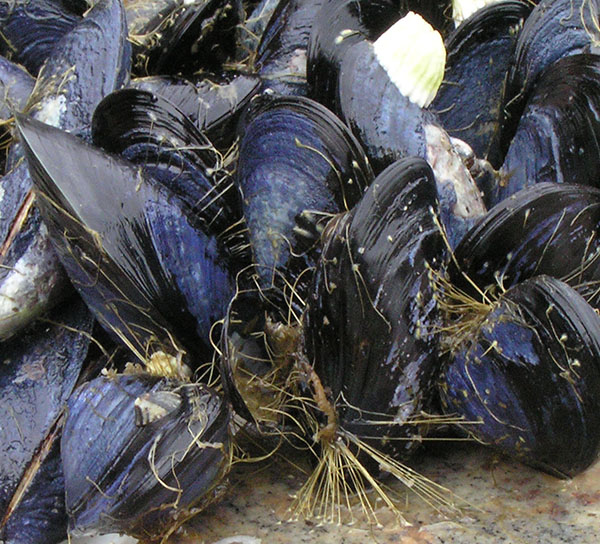Dr. Molly Roberts completed her PhD with Dr. Emily Carrington in 2019 in the Biology Department at UW. Her research involved both experimental work at FHL and fieldwork at Penn Cove Shellfish in Coupeville, WA. Prior to her time in graduate school she was a technician in the FHL Ocean Acidification Environmental Laboratory. She is now working with Dr. Sarah Gilman to predict barnacle growth at a field site at Friday Harbor using an energetics framework.
Specialized biological structures such as teeth, bone, and spider webs are key for organisms’ survival. Animals use the energy they acquire from food to maintain their body tissue, to grow new tissue, and to build specialized structural materials like those above. It's a constant challenge for organisms to allocate, or distribute, this energy to a range of different biological processes and growth of materials in such a way that maximizes their survival. One way that resource allocation can be conceptualized is through a framework called Scope for Growth. Similar to how we all must balance our financial budgets by calculating our income, cost of rent and net savings, biologists use Scope for Growth to calculate the intake of energy from food, metabolic costs and resulting surplus energy available for the growth of new tissues. What is less well-understood is how much of their ‘energy budget’ animals allocate to building specialized structural materials.

Mussels are bivalve mollusks that live in a wave-swept environment, and the ability to strongly anchor to the habitat is key to their survival. Mussels attach to surfaces by producing a network of protein-based fibers called byssal threads (Figure 1). I was interested in the cost of producing these threads, and the effect of food availability and energetics on their production. I worked with two species,
Mytilus trossulus and
Mytilus galloprovincialis, a native mussel species and an identical-looking cultured mussel species, both of which end up in stores and restaurants in Washington.
Fig. 1: Mussels anchor themselves to their habitat by producing a network of collagen-like fibers known as byssal threads. Credit: E. Carrington.
First I wondered whether mussels that have more resources (e.g. with abundant food availability and moderate seawater temperature) produce a stronger network of byssal threads. Mussels feed by filtering tiny algae from seawater. The concentration of algae in the seawater can fluctuate over time, affecting the resources that mussels have available for growth. In addition, higher temperatures cause organisms to metabolize faster, increasing demands and the “cost” of metabolism. I tested the effect of seawater temperature and food availability on growth and byssal thread production for these two Mytilus species in a 10-week lab experiment. I observed that mussels had different rates of growth across a range of temperature and food conditions, but there was no measurable effect of these long-term experimental conditions on byssal thread strength and quantity at the end of the experiment.
This made me wonder, do mussels prioritize making byssal threads above other processes or above growth? I'd found that mussels grew at different rates depending on temperature and food availability, but did not make a different number of byssal threads. An analogy to our own daily lives is that each month we prioritize our financial resources toward our homes or rent (staying anchored), and can only allocate what is left (surplus) toward our savings (growing bigger).
I worked with my advisor Emily Carrington as well as Ken Sebens, Laura Newcomb, and FHL undergrads Katie Harrington, Michelle McCartha, and Sam LaFrambois to quantify the cost of producing threads. Our group performed an experiment where byssal threads were removed either daily, weekly, or just once over the course of a month, and we measured the total number of new threads mussels produced as well as tissue growth. This experiment demonstrated that when we removed threads frequently (e.g. daily), mussels produced a greater number of new threads (Figure 2). Even more interestingly, mussels that produced more byssal threads grew less tissue!